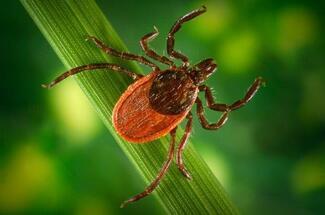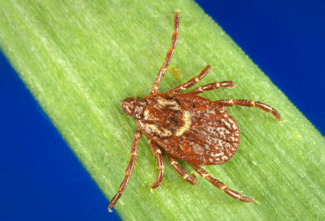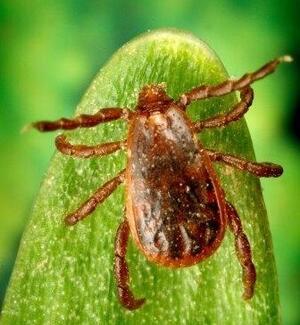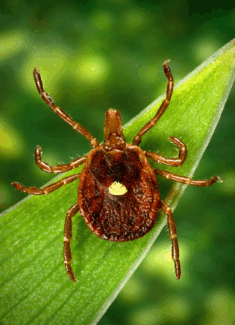Name: Lone star tick (Ambylomma americanum)
Distribution: this tick is not considered established, or able to complete its entire life cycle, in Vermont
The Health Department works with other state agencies to search for the lone star tick in Vermont and support people with information to protect themselves.
Habitat: woodlands with plenty of undergrowth and areas with tall, shaded grass
Hosts: squirrels, raccoons, deer, cattle, some bird species, cats, dogs and humans
Transmits: the pathogens that cause ehrlichiosis and tularemia (human cases in Vermont are extremely rare), as well as Alpha-gal syndrome (AGS).
Active: April through September. While most ticks wait in grass or brush to grab on to people or animals who pass by (questing), lone star ticks also actively track down a host by following the trail of air the host breathes out.





